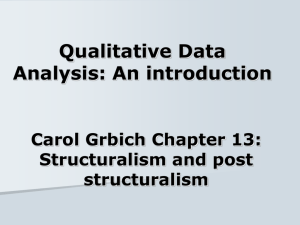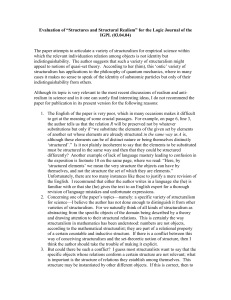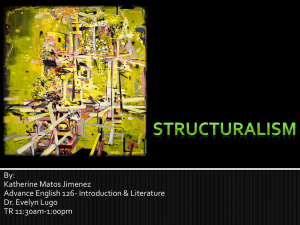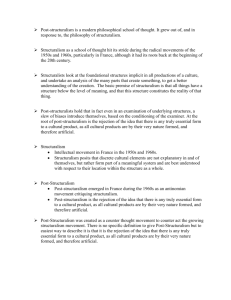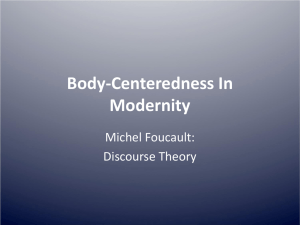Reading hand-out #1
advertisement
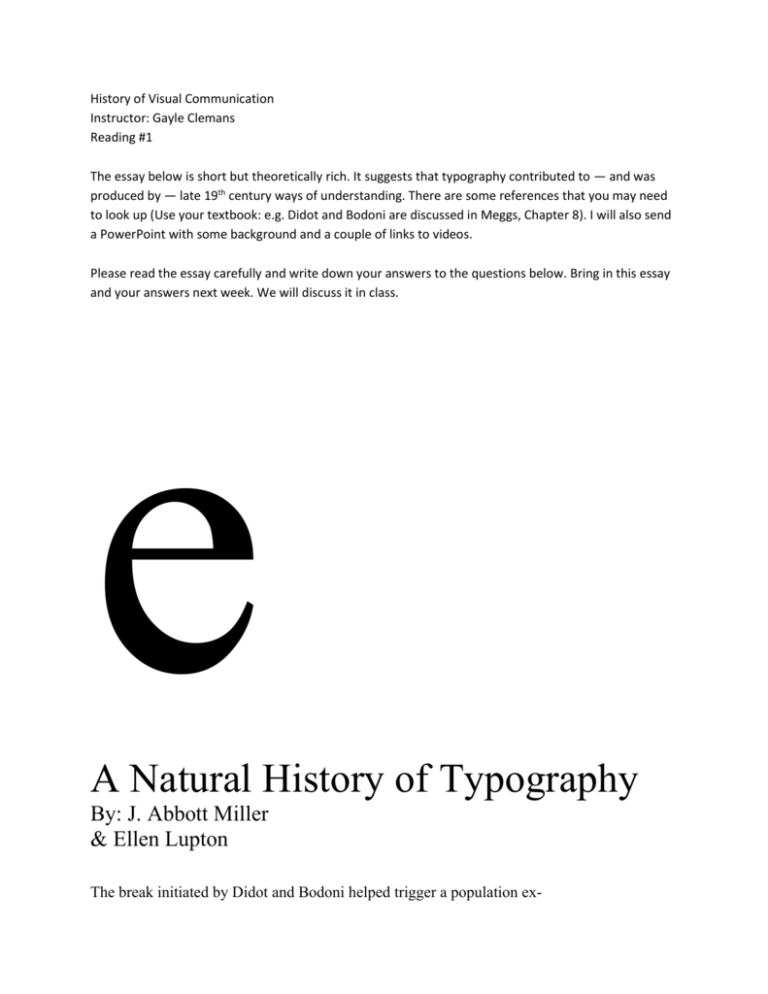
History of Visual Communication Instructor: Gayle Clemans Reading #1 The essay below is short but theoretically rich. It suggests that typography contributed to — and was produced by — late 19th century ways of understanding. There are some references that you may need to look up (Use your textbook: e.g. Didot and Bodoni are discussed in Meggs, Chapter 8). I will also send a PowerPoint with some background and a couple of links to videos. Please read the essay carefully and write down your answers to the questions below. Bring in this essay and your answers next week. We will discuss it in class. e A Natural History of Typography By: J. Abbott Miller & Ellen Lupton The break initiated by Didot and Bodoni helped trigger a population ex- plosion in nineteenth-century commercial typography, spawning bizarre new specimens which rejected classical norms in favor of the incessant pursuit of novelty. Technology encouraged the proliferation of new fonts. The introduction of the combined pantograph and router in 1834 revolutionized wood-type manufacture. The pantograph is a tracing device which, when linked to a router for carving letters out of wood or metal, allows different sizes and styles of a font to be generated from a single parent drawing, eliminating the painstaking task of cutting individual punches by hand. This automated approach to type design led the historian Daniel Berkeley Updike to later denounce the pantograph for its tendency to “mechanize the design of types.” The programmatic shifts in scale enabled by the pantograph encouraged an understanding of the alphabet as a flexible system, susceptible to systematic variations divorced from a calligraphic origin. The swelling population in the nineteenth-century of typographic mutants – compressed, expanded, outline, inline, shadowed, extruded, faceted, floriated, perspectival, bowed – signals a shift in the “signified” of typography. The notion of letterforms as essential, archetypal structures gave way to a recognition of letters as units within a larger system of formal features (weight, stress, cross-bars, serifs, angles, curves, ascenders, descenders, etc.). The relationships between letters within a font became more important than the identity of individual characters. The variety of nineteenth-century display faces suggested that the “alphabet” is a flexible system of differences, not a pedigreed line of fixed, self-contained symbols. The proliferation of typefaces available for use in books and advertising led the American Type Founder Company (ATF) to organize fonts into “type families” in the early twentieth century. Each family consists of variations of a single parent design – book, italic, bold, condensed, etc. This system – still in use today – aimed to encourage printers and their clients to use genetically related characters rather than combining fonts of mixed heritage. The use of type families, claimed the 1923 ATF catalogue, had “added dignity and distinction... to commercial printing.” It also reflected the structuralist view of a type-face as a set of genetic traits that could be mechanically translated across a series of siblings. From: Looking Closer: Critical Writings on Graphic Design (1994) Discussion Questions 1. What was “the break initiated by Didot and Bodoni”? 2. What were the pros and cons of the pantograph? 3. What is meant by the following sentence? “The swelling population in the nineteenth-century of typographic mutants…signals a shift in the “signified” of typography.” 4. What is meant by the following sentence? “The variety of nineteenth-century display faces suggested that the ‘alphabet’ is a flexible system of differences, not a pedigreed line of fixed, self-contained symbols.” And why did the authors put “alphabet” in quotation marks? 5. What is meant by the following sentence? The introduction of type families “reflected the structuralist view of a type-face as a set of genetic traits.” HINT: READ ABOUT STRUCTURALISM BELOW. Definition of Structuralism 1: psychology concerned especially with resolution of the mind into structural elements 2: structural linguistics 3: an anthropological movement associated especially with Claude Lévi-Strauss that seeks to analyze social relationships in terms of highly abstract relational structures often expressed in a logical symbolism 4: a method of analysis (as of a literary text or a political system) that is related to cultural anthropology and that focuses on recurring patterns of thought and behavior Historical Context of Structuralism At the end of the 19th century, many advances in science were occurring due to a fundamental concept which was then referred to as "elementism" and now can be called “structuralism.” Elementism/structuralism refers to the conception of complex phenomena in terms of basic parts or elements. This conception of science was leading to many important discoveries with important applications in fields such as biology, anthropology, psychology, and linguistics. Structuralism in Critical Theory In critical theory, structuralism is a theoretical paradigm positing that elements of human culture must be understood in terms of their relationship to a larger, overarching system or structure. It works to uncover the structures that underlie all the things that humans do, think, perceive, and feel. Structuralism is "the belief that phenomena of human life are not intelligible except through their interrelations. These relations constitute a structure, and behind local variations in the surface phenomena there are constant laws of abstract culture" (Simon Blackburn, philosopher). 6. What does the title of the essay - “A Natural History” – suggest? 7. Go back through the essay and circle examples of language that suggest biology, natural history, or structuralism. Sources: Bierut, Michael. Looking Closer: Critical Writings on Graphic Design (1994) http://www.merriam-webster.com/dictionary/structuralism http://web.mst.edu/~psyworld/structuralism.htm Blackburn, Simon. Oxford Dictionary of Philosophy, second edition revised. Oxford: Oxford University Press (2008)


